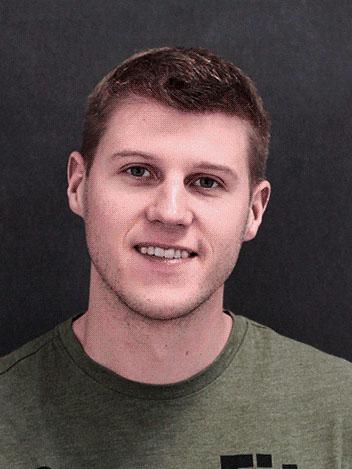A young computer science PhD is pushing the boundaries of digital printing
Whether it’s on paper, textile, ceramics or laminate, inkjet printing has a wide range of different uses and clients. Companies operating in the sector have to work quickly and at a low cost, their printers have to meet standards in terms of quality and speed, and the software used to control them must be able to keep the pace. “These things are quite impressive”, explains Vincent Loechner, a lecturer at the University of Strasbourg. “Printing on fabric is done at 100 metres a minute, and IT programs have to send data in order to generate different inkjet plans that meet time constraints linked to the physical speed of the printer.” For 26 years, Caldera has been publishing software programs for this highly specific sector, drawing on both the expertise of CAMUS, a team connected to the Inria Nancy - Grand-Est research centre, and its geographical location at the ICube laboratory in Strasbourg.
In 2015, Paul Godard completed a Master’s in computer science at the University of Strasbourg, before returning to Caldera, where he had been for his last placement, as an engineer. He then started his PhD in 2016, splitting his time between industry and research, and had three years to make software performance more accessible and more flexible for high availability systems. There are a number of different usage models for industrial printing, each with its advantages and disadvantages. Paul Godard was able to develop an effective dialogue between software and machinery, successfully building a responsive system capable of adapting to constraints in real-time with high volumes of data. Patrick Zimmerman, Caldera’s technical director, has made no secret of his excitement: “The results were amazing!”
“A different way of looking at things from an engineer who solves problems with the tools they have at-hand.”
Out of core matrix transformation: “A fun problem to work with”
Rotating a large printing file a quarter turn can take several minutes, but Paul Godard believed this time could be reduced. In December 2020, the IEEE TC journal published an excerpt from his research about matrix transposition and rotation. For a researcher like Vincent Loechner, “It’s a fun problem to work with: you have to write a highly intelligent program to handle bitmap images, which are too large to be stored in RAM. Out of core prevents you from reading the whole file in one go. Paul's paper was in a field where the last major breakthrough came about fifteen years ago.”
Caldera has gradually been integrating different aspects of Paul Godard’s research into a new distributed computing architecture, the CIFRE PhD proving to be a good return on investment. Indeed, this company-based research training initiative seemed made for Paul Godard: “Since beginning my further education with a degree in technology, I have always been close to industry. The CIFRE PhD scheme means you don't have to chase after companies in order to justify your research. Paul says he enjoys operating in a concrete framework with tangible goals, but the PhD also gave him the time to explore new possibilities, to understand the world of research, and to develop “a different way of looking at things from an engineer who solves problems with the tools they have at-hand.” Caldera supplied the logistics, while Cédric Bastoul, a professor at the University of Strasbourg, and Vincent Loechner, his two PhD supervisors, taught him “how to do science”. Paul looks back on his PhD as “a very fortunate turn of events”: a former student, recruited by a partner company of the ICube laboratory and a research project that was complementary with the work carried out by the CAMUS project team.
This CIFRE PhD was the first one for everyone involved in the project. But everyone is convinced that Paul Godard, who is now a research engineer, will supervise further CIFRE PhDs at Caldera, allowing him to share his expertise when it comes to getting computers to work together and promoting dialogue between science and industry.
See also: OptiTrust: developing better computer code with no bugs
Find out more
